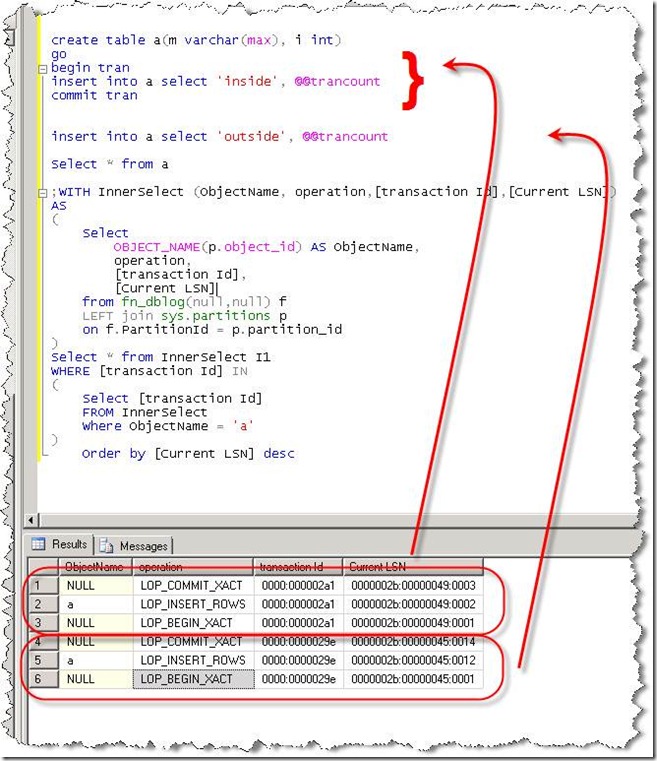Usage of @@Trancount in DML statements
Some time ago I got an interesting questions why the following applies:
--drop table a
create table a(m varchar(max), i int)
go
declare @cnt int
--Explicit transaction
begin tran
set @cnt=@@trancount
insert into a select 'inside', @@trancount
insert into a select 'inside cnt', @cnt
commit tran
set @cnt=@@trancount
--Implicit transcation
insert into a select 'outside', @@trancount
insert into a select 'outside cnt', @cnt
select * from a
The output is:
inside 2
inside cnt 1
outside 2
outside cnt 0
So why is that? The reason is that the trancount counts the user transaction as well as the inner transaction. You can also see that if you take a look at the transaction log for that. I a DML statement it will be always at least 2.
You see that the inner transaction is reusing the outer transaction in case one exists. So if you really need the information of @@TRANCOUNT, you should think about putting that in a local variable first.
The script of the picture below can be downloaded here.
-Jens
Comments
Anonymous
January 29, 2013
good oneAnonymous
February 17, 2013
Can you please explain it more. Thanks in Advance, DileepAnonymous
February 17, 2013
The comment has been removedAnonymous
February 18, 2013
Hi Jeans, I didn't get why @@Trancount is set to 2 in a DML statement and also the difference between explict and implicit transactions in terms of @@Trancount. Thanks for your replyAnonymous
February 11, 2014
I still don't understand where the outside counts. I understand 'outside cnt' = 0, but thing 'outside' should = 1. Where does the 2 come from?
